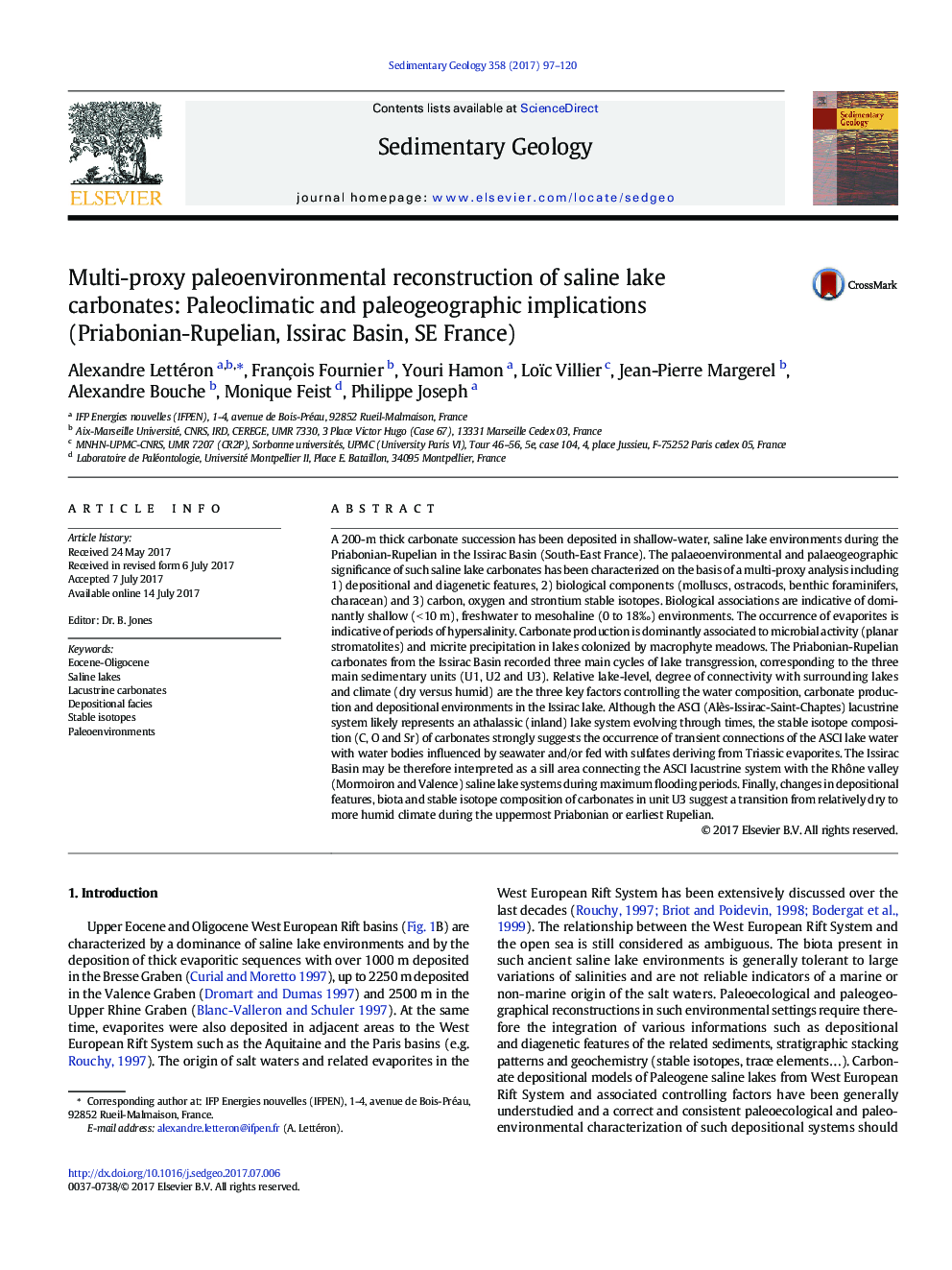| کد مقاله | کد نشریه | سال انتشار | مقاله انگلیسی | نسخه تمام متن |
|---|---|---|---|---|
| 5781345 | 1636005 | 2017 | 24 صفحه PDF | دانلود رایگان |
عنوان انگلیسی مقاله ISI
Multi-proxy paleoenvironmental reconstruction of saline lake carbonates: Paleoclimatic and paleogeographic implications (Priabonian-Rupelian, Issirac Basin, SE France)
دانلود مقاله + سفارش ترجمه
دانلود مقاله ISI انگلیسی
رایگان برای ایرانیان
کلمات کلیدی
موضوعات مرتبط
مهندسی و علوم پایه
علوم زمین و سیارات
فرآیندهای سطح زمین
پیش نمایش صفحه اول مقاله

چکیده انگلیسی
A 200-m thick carbonate succession has been deposited in shallow-water, saline lake environments during the Priabonian-Rupelian in the Issirac Basin (South-East France). The palaeoenvironmental and palaeogeographic significance of such saline lake carbonates has been characterized on the basis of a multi-proxy analysis including 1) depositional and diagenetic features, 2) biological components (molluscs, ostracods, benthic foraminifers, characean) and 3) carbon, oxygen and strontium stable isotopes. Biological associations are indicative of dominantly shallow (< 10 m), freshwater to mesohaline (0 to 18â°) environments. The occurrence of evaporites is indicative of periods of hypersalinity. Carbonate production is dominantly associated to microbial activity (planar stromatolites) and micrite precipitation in lakes colonized by macrophyte meadows. The Priabonian-Rupelian carbonates from the Issirac Basin recorded three main cycles of lake transgression, corresponding to the three main sedimentary units (U1, U2 and U3). Relative lake-level, degree of connectivity with surrounding lakes and climate (dry versus humid) are the three key factors controlling the water composition, carbonate production and depositional environments in the Issirac lake. Although the ASCI (Alès-Issirac-Saint-Chaptes) lacustrine system likely represents an athalassic (inland) lake system evolving through times, the stable isotope composition (C, O and Sr) of carbonates strongly suggests the occurrence of transient connections of the ASCI lake water with water bodies influenced by seawater and/or fed with sulfates deriving from Triassic evaporites. The Issirac Basin may be therefore interpreted as a sill area connecting the ASCI lacustrine system with the Rhône valley (Mormoiron and Valence) saline lake systems during maximum flooding periods. Finally, changes in depositional features, biota and stable isotope composition of carbonates in unit U3 suggest a transition from relatively dry to more humid climate during the uppermost Priabonian or earliest Rupelian.
ناشر
Database: Elsevier - ScienceDirect (ساینس دایرکت)
Journal: Sedimentary Geology - Volume 358, 1 August 2017, Pages 97-120
Journal: Sedimentary Geology - Volume 358, 1 August 2017, Pages 97-120
نویسندگان
Alexandre Lettéron, François Fournier, Youri Hamon, Loïc Villier, Jean-Pierre Margerel, Alexandre Bouche, Monique Feist, Philippe Joseph,